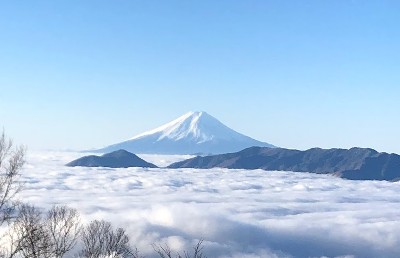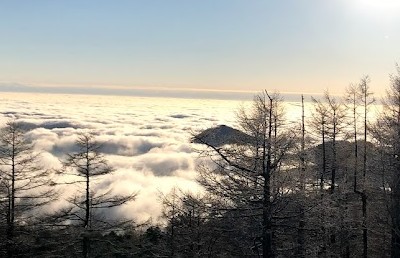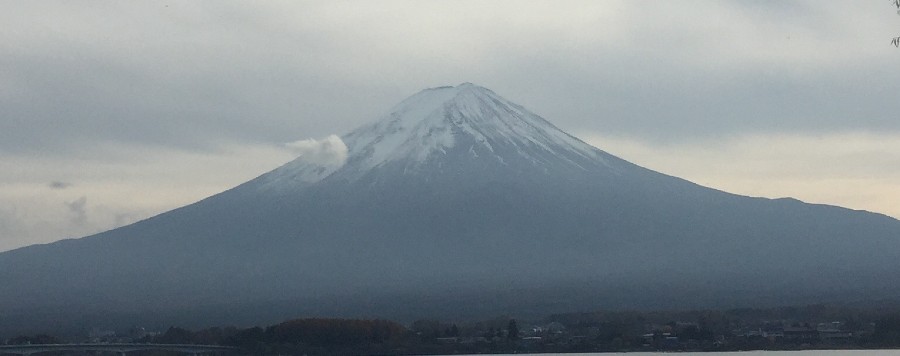What is Mt Fuji?
Mt Fuji is located between Yamanashi and Shizuoka prefectures, this active volcano is loved by many as a symbolic mountain of Japan. Selected as one of the three most famous mountains in Japan and one of the 100 most famous mountains in Japan, it is a popular spot with climbers of all ages and both sexes every year (season: July to August). There are four routes (Fujinomiya Route, Subashiri Route, Gotemba Route, and Yoshida Route), and since the roads and trails to the fifth station are well maintained, many people visit by bus or car. Even inexperienced climbers can easily climb Mt.Fuji.
History of Mt Fuji

More than 3 million years ago, Mt. Fuji and the surrounding area were at the bottom of the Pacific Ocean. Then, active eruptions by two volcanoes, Ataka and Komitake, brought about the appearance of land in the area. The volcanic activity of the two volcanoes ceased about 80,000 years ago, and the mountain that emerged between them is the original form of Mt. The lava flow and volcanic ash from the eruption of Ko-Fuji were blocked by the extinct volcanoes of Ataka and Komitake, and the volcanoes grew higher and higher. The lava and mud flows from the repeated eruptions reached from present-day Fujinomiya City to Fuji City, Gotemba, and even Sagami Bay. Through repeated eruptions, the old Fuji gradually took shape into the present Shin-Fuji. Because the eruptions of Shin-Fuji were quiet, they did not destroy the shape of the mountain, and it gradually rose in altitude to its present form. The Fuji Five Lakes at the foot of Mt. Fuji were created when lava flows from repeated eruptions dammed the large lakes.Fuji has been considered a "mountain where gods and Buddha dwell" due to its repeated volcanic activities. Sengen Shrine was built for the purpose of quelling eruptions and as a place of worship to the summit from the foot of Mt. In the late Heian Period (794-1185), when the eruptive activity subsided, the shrine became a place for rigorous ascetic practices as a "dojo of shugendo," a combination of mountain worship and foreign Buddhism. In the latter half of the Muromachi period (1333-1573), the general public began to climb the mountain for worship, and from the Edo period (1603-1867), when the belief in Mt. Fuji, and since the Edo period, when the faith became popular, many climbers have been coming to the mountain. Fuji is still an object of religious worship today, as people worship the sunrise at the summit of the mountain and make a "round-the-hotpot tour" around the crater.
Art of Mt Fuji
Fuji has been the subject of numerous paintings and literary works because of its beauty and grandeur. Fuji has already appeared in Japan's oldest anthology of poetry, Manyoshu, and in classical literature in Taketori Monogatari (The Tale of Taketori) and Ise Monogatari (The Tale of Ise). Fuji has also been featured in the works of great writers such as Soseki Natsume and Osamu Dazai. In paintings, Katsushika Hokusai's "Thirty-six Views of Fugaku" and Utagawa Hiroshige's "The Fifty-three Stages of the Tokaido" are well-known. Exported abroad, these ukiyoe had a great influence on Western artists such as Van Gogh and Monet. Thus, Mt. Fuji became known as a source of art not only in Japan but also abroad.

World Cultural Heritage (UNESCO)
Fuji was registered as a World Heritage site in June 2013 in recognition of its magnificent nature, religious beliefs, and artistic culture. Fuji as an object of faith and a source of art. In addition to Mt. Fuji itself, a total of 25 sites, including surrounding shrines and mountain trails, are registered as World Heritage sites as cultural assets that provide concrete evidence that.
How To Get To Mount Fuji
There are many ways to access Mt. Fuji from the Tokyo metropolitan area. By train, take the JR or Keio Line from Shinjuku Station to Otsuki Station, then take the Fujikyuko Line from Otsuki Station to Mt. One way: about 2 hours and 30 minutes one way: 2,000-2,400 yen. In case of renting a car, it takes two hours from the Tokyo metropolitan area and costs less than 5,000 yen. By bus, it takes two and a half hours and costs less than 3,000 yen.
